8 famous photos that hide fascinating stories
Categories: History | Society | World
By Pictolic https://pictolic.com/article/8-famous-photos-that-hide-fascinating-stories.htmlProbably everyone has seen a photo of a sailor and a nurse kissing in Times Square or a portrait of Albert Einstein with his tongue hanging out. But do you know the stories behind these iconic images?
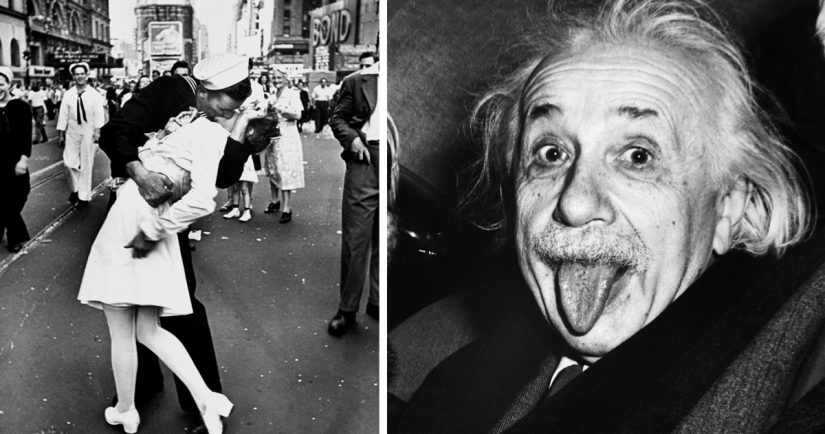
In 1936, photographer Dorothea Lange photographed this penniless woman, 32-year-old Florence Owens, with an infant and two of the seven other children at a pea picker camp in Nipomo, California. Lange took the picture, which was nicknamed the "Migrant Mother," as part of a project commissioned by the Franklin Roosevelt New Deal Resettlement Administration to document the plight of migrant workers.
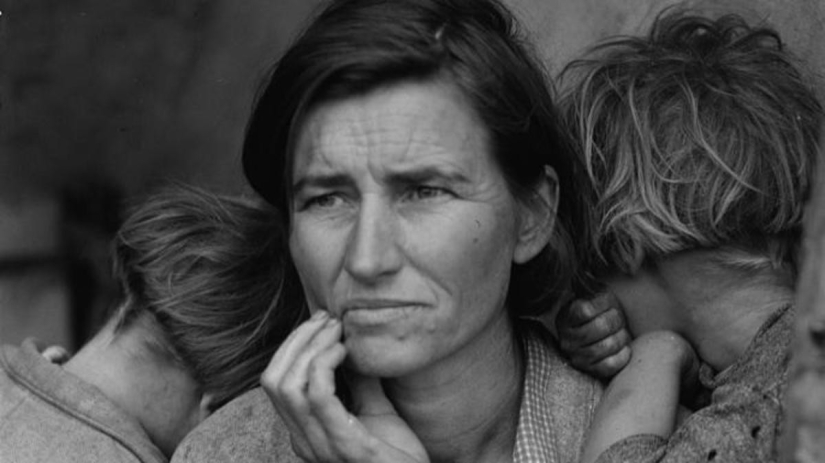
Her picture of Owens was soon published in newspapers, prompting the government to deliver food aid to the Nipomo camp, where several thousand people were starving and living in terrible conditions. However, by that time, Owens had already moved with her family.
Lange's photograph became a symbol of the Great Depression, but the identity of the migrant mother remained a mystery for decades, since Lange did not ask her name. In the late 70s, a reporter tracked down Owens (then she was named Thompson): she lived in Modesto, California. Thompson was critical of Lange, who died in 1965.
The woman stated that because of the photo she felt used and regretted that Lange had taken it at all. She also expressed regret that she did not earn any money from the picture. Thompson died at the age of 80 in 1983. In 1998, a copy of the photograph signed by Lange was sold at auction for $244,500.
On February 23, 1945, Associated Press photographer Joe Rosenthal photographed five Marines and an orderly raising the U.S. flag on Mount Suribachi, the highest point on the Japanese island of Iwo Jima.
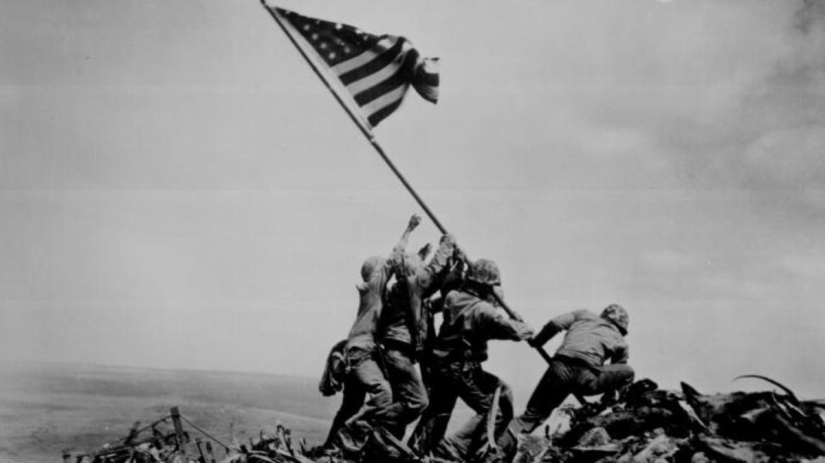
One of the bloodiest battles in the history of the Marine Corps began on February 19, 1945, when the Americans invaded the heavily fortified island; four days later they captured it and planted a small flag on top of Mount Suribati. However, later that day, the flag was ordered to be replaced with another, much larger one, so that it could be seen by all soldiers on the island and on ships in the open sea.
Rosenthal's photo demonstrates just the second ascent of the star-spangled landing. Subsequently, the military photographer was accused of a dramatic production, but he denied the charges, and eyewitnesses supported him. The widely circulated photograph became a powerful patriotic symbol, subsequently won the Pulitzer Prize and served as a model for the Marine Corps War Memorial near Arlington National Cemetery.
Three Marines pictured were killed in action on Iwo Jima (the fight did not officially end until March 26, 1945), and the three survivors were sent back to the United States, where they were revered as heroes. They spoke at meetings across the country in support of the sale of war bonds.
The famous photographer Alfred Eisenstadt took this photo of a sailor kissing a woman in white in Times Square on August 14, 1945 after the announcement of the surrender of Japan, which marked the end of World War II. On August 27, the photo was published in Life magazine.
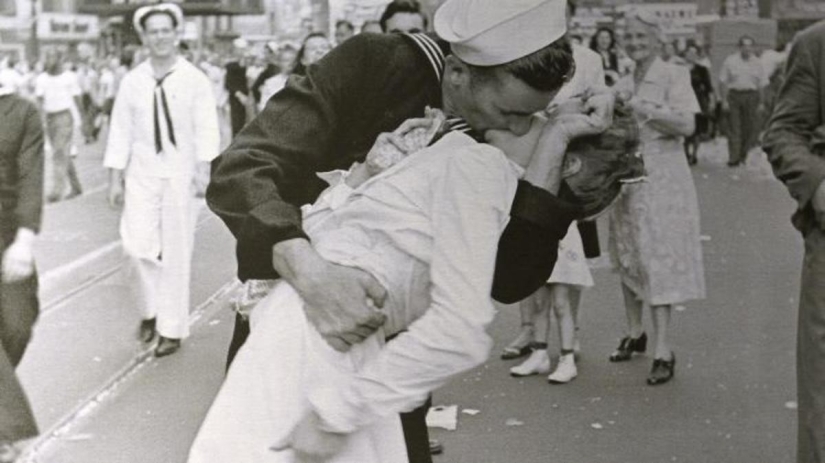
US Navy photographer Victor Jorgensen also managed to capture this scene from a different (less well-known) angle. None of the photographers had time to ask the couple their names, and in the following years, different men and women claimed that they were the ones captured in the photo. Eisenstadt later said of this day:
For example, in the 2012 book The Kissing Sailor, the couple was identified as sailor George Mendonsu and Greta Zimmer, a dental assistant who did not know Mendonsu before his spontaneous kiss. However, other couples have presented sufficiently reliable evidence, so the identity of the heroes of the picture has not yet been definitively established.
On March 14, 1951, photographer Arthur Sass photographed Einstein leaving a celebration held in honor of his 72nd birthday in Princeton, New Jersey. Sass asked the Nobel laureate to smile, but he stuck out his tongue instead. It turns out that Einstein liked the picture so much that he made several copies for himself.
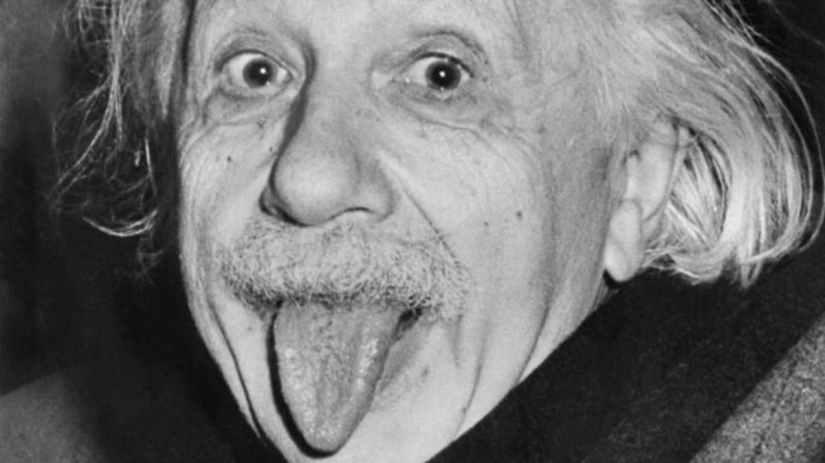
Einstein, who became a U.S. citizen in 1940, died four years after Sass took the famous picture. In 2009, the original photo with the signature of the famous scientist was sold at auction for more than $ 74,000. In 1953, at the height of Senator Joseph McCarthy's anti-communist crusade, Einstein gave the photograph to journalist Howard K. To Smith with the following signature (translated from German):
Einstein opposed McCarthyism, and historians believe that the gesture in the photo and the inscription on it personify his spirit of nonconformism.
On March 5, 1960, Alberto Korda, a Cuban fashion photographer turned photojournalist, photographed a 31-year-old Marxist revolutionary in Havana at a funeral rally in memory of the victims of the explosion of the ship "La Couvre".
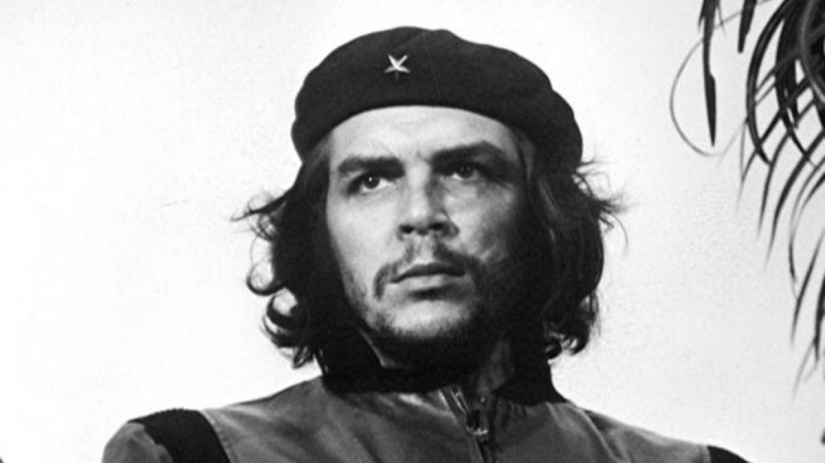
The explosion killed at least 75 people and injured several hundred, and although the exact cause of the explosion was never determined, Fidel Castro blamed the United States.
After the memorial service, the newspaper Revolucion, where Korda worked, published photos of Castro and other dignitaries and rejected Guevara's photo. In the following years , the picture appeared in various publications in Cuba and in Europe, but did not attract much attention.
In 1967, the left-wing Italian publisher Giangiacomo Feltrinelli, who was interested in Guevara, found out about the photo during a visit to Cuba and received a free copy from Cords.
Later that year, when Guevara was captured and killed by soldiers in Bolivia, Feltrinelli distributed posters with a photo of Korda, dubbed "Guerrillero Heroico" (Heroic Guerrilla), and soon the image spread around the world, becoming a symbol of revolution and youthful rebellion. Since then, the picture has become one of the most widely reproduced images in history and has appeared on everything from murals to beer bottles.
Two hours after the assassination of President John F. Kennedy. On November 22, 1963, Vice President Lyndon Johnson was sworn in as the 36th President of the United States aboard Air Force One at Dallas/Love Field Airport.
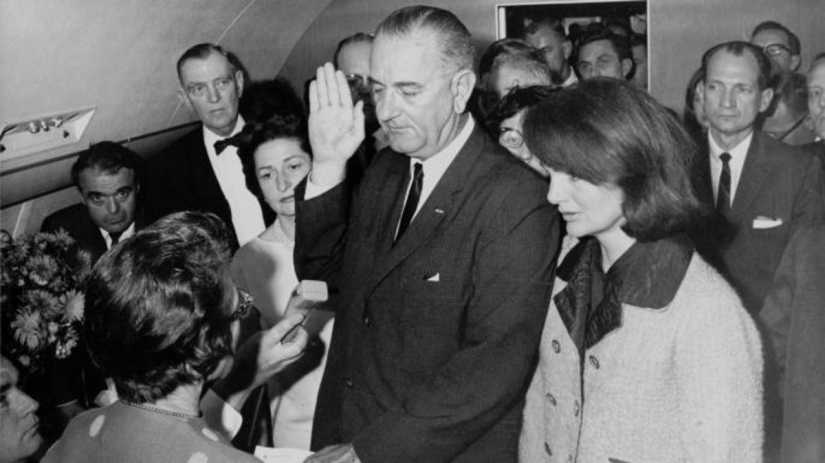
Cecil Stoughton, a former Army photographer who has been the official White House photographer since 1961 (the first person to hold the post), took a historic photo of Judge Sarah Hughes swearing in Johnson in the company of his wife, staff and a stunned Jacqueline Kennedy, still wearing the pink Chanel suit she was wearing. when her husband was shot.
At the time of Kennedy's assassination, Stoughton was driving behind Kennedy as part of his motorcade, they were separated by several cars. After that, Stoughton went to Parkland Hospital, where Kennedy died, and then the photographer rushed to Love Field to catch Johnson's oath.
Stoughton was the only photographer on the plane at Johnson's inauguration and at first, when his camera failed, everyone decided that there would be no photos. However, he quickly fixed the problem and was able to document the event. In a chaotic time for the United States, Stoughton's photograph proved that there is still continuity of government in the country.
On December 21, 1970, the king of rock and roll secretly met with the 37th President of the country in the Oval Office, and this event was captured by White House photographer Ollie Atkins. The meeting took place after Presley appeared unannounced at the gates of the White House and handed the president a handwritten letter.
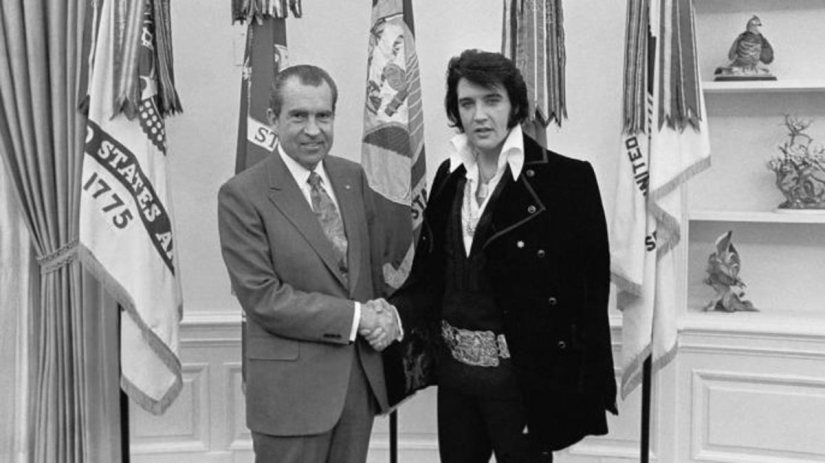
The musician said that he wanted to be useful to the country, and offered to make him a "federal agent on special assignments" to help the United States in the war on drugs. After the letter fell into the hands of Nixon's assistant, Presley was invited to a meeting with the president on the same day.
During the meeting, the artist confirmed his desire to help the president, shared his belief that the Beatles were promoting anti-Americanism, and said that he had studied communist brainwashing and drug culture. Presley, who collected pistols and police badges, then asked Nixon to give him a badge of a federal drug enforcement agent — this request was granted the same day.
Also, at Presley's request, his conversation with the commander-in-chief was kept secret, and the media did not find out about it until the following year. In 1977, the legendary musician, who had never worked in the White House, died of heart failure, allegedly related to the abuse of prescription drugs.
In this photo taken on May 1, 2011, President Barack Obama and National security officials receive the latest information about the top-secret Navy SEAL raid on the Pakistani hideout of one of the most wanted people in U.S. history, Al-Qaeda leader Osama bin Laden.
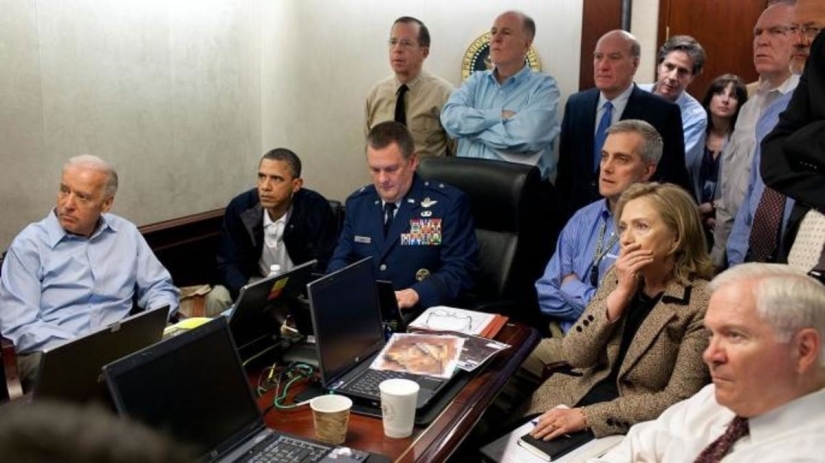
At 11:35 a.m. eastern time that night, the president spoke live and announced that the organizer of the September 11 terrorist attacks had been killed by Navy seals. White House photographer Pete Souza took the picture after Obama and his senior aides gathered in a small conference room in the West Wing Situation Room, where Brigadier General Marshall "Brad" Webb was overseeing the mission. When Obama entered the room, Webb offered the president his chair. However, as Obama later told NBC News:
Obama later called this risky raid, during which a SEAL helicopter landed at bin Laden's hideout, the longest 40 minutes of his life, and Secretary of State Hillary Clinton said that she followed the raid so closely that she did not know that a White House photographer was photographing them.
Recent articles

In November 69 BC, she was born Cleopatra, the last Queen of Egypt from the Macedonian dynasty of the Ptolemies. Cleopatra, perhaps ...

Explosions of smartphone batteries and short circuits in sockets no longer become a sensation, but few people know that the danger ...

It is believed that the appearance of gray hair — it is a sign of aging, the gradual extinction of the organism. Many ...